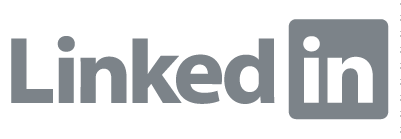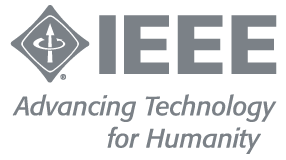Testing your ideas before launching is the best way to succeed and void common mistakes. We put together a detailed but simple five-step guide based on a Silicon Valley investor's point of view.

The first step in preparing to start a venture is testing your ideas. If you make a blind assumption about a concept's success, you will face a high risk of spending money, time, and other resources for a small result or even nothing. First-time entrepreneurs and inexperienced leaders frequently underestimate the importance of tasting an idea, especially when they are in a hurry to launch their product. Some others spend uncountable hours developing a detailed business plan before realizing it is based on wrong assumptions or poor data.
Do it correctly. You must master the essential elements that make an idea the base for a prospective new venture.
1. Problem
Ask yourself, 'what problems does this idea solve' and 'do people care enough to get these problems solved.' Finding a problem is always the starting point; it doesn't need to be an 'unsolved' problem. Any problem is fine for creating a new venture as long as enough people (future users or customers) care about it and are willing to pay to get it covered.
After identifying the problem, ask yourself if it is a problem that 'must' be solved or is 'nice' to solve. For example, it is about a coffee cup with a new shape that would be nice to have; or a new way to treat a disease affecting a rising number of individuals.
2. Solution
Once your problem is well identified, consider its solution. First of all, there is not just one solution. If it is a big must-have problem, multiple people are working on it, and numerous solutions are already developed and on the market. Only small problems have limited, or almost no, people working on a solution (and no prospective users or clients). Be prepared to compare your solution with others. Ask, 'is my solution better, cheaper, and/or faster?'
Better means a more reliable product or service, additional features, or an improved assembly process. When looking to make the product better for the customer, you also need to be careful. Don't make a Ferrari when all that is needed is a Toyota. Always keep your user's/customer's expectations in mind.
Faster is related to saving time or money. If you are working on a new car engine, it is easier to understand what 'fast' means. But it could also be a faster processor or algorithm, a more straightforward user interface, or a better user experience.
A cheaper product is always a good thing. Remember, you get what you pay for. Always perform a complete cost analysis to verify you have considered all costs and that there is a way to generate a profit for you and your investors.
3. Competitors
You don't want to get too many details about your competitors. But, it is a good idea to understand their strategies and why your product is different. By looking at other businesses, you can see what has worked in the past and what failed.
Reviewing the competition will also help you define what makes your idea stand out and show consumers how your solution (to a similar problem) differs. You must also specify a strategy to protect your product from future competitors. Do you have a technology barrier (eventually supported by a patent or other intellectual property), or can you build some market barriers?
Market barriers are generated by being the first-mover into a new market or offering a different product; you can also consider ways to lock your clients. Social networks create user retention by becoming a meeting spot and a place to manage your social connections. Electrical scooter companies made market barriers in small towns by becoming industry leaders and having the people used to their service. Being a first and fast mover requires capital and a sound go-to-market strategy.
4. Market
Your target market is one of the best sources to test your business idea. Define your ideal customer, then ask your friends in this description what they think about your product and if they are willing to use/buy it.
Venture capitalists consider attractive investments in startups that can innovate old, obsolete, and fat markets. An old market is a well-established market like the banking industry; it has existed for hundreds of years, and people are used to it. You will not need to develop a new market. If the market is also obsolete (no recent innovation) and full of money (fat = people are used to spending in this market), you are in even better shape. It doesn't surprise the number of startups working on innovating the banking business (old, obsolete, and fat), from payment solutions to money transfers.
5. You (and your team)
Do you have the proper knowledge and experience to run this project? You and your team are the most critical asset in a new venture. A good founding team can make a bad product successful, while the wrong team can develop the greatest idea badly.
You are in a great position if you have already participated in a new venture as a founder or one of the first employees. First-time innovators and experienced leaders can always benefit by getting some training. Skilled instructors, venture capitalists, and entrepreneurs can share with you their experiences and real-life stories so you can avoid the main reasons for failure and help you develop your project faster and smoother.
There are also some environmental factors to consider. Launching a new venture in a country or city where people are early adopters, better educated, and with high salaries can help. It might be more challenging to do it in a poor region or where the local culture is historically conservative and not very open to changes.
Self-evaluation test
The TVLP Institute is working on a self-evaluation tool to help entrepreneurs and innovators better select their ideas. You can try our test prototype on this page.
Ph. credit: Unsplash

The first step in preparing to start a venture is testing your ideas. If you make a blind assumption about a concept's success, you will face a high risk of spending money, time, and other resources for a small result or even nothing. First-time entrepreneurs and inexperienced leaders frequently underestimate the importance of tasting an idea, especially when they are in a hurry to launch their product. Some others spend uncountable hours developing a detailed business plan before realizing it is based on wrong assumptions or poor data.
Do it correctly. You must master the essential elements that make an idea the base for a prospective new venture.
1. Problem
Ask yourself, 'what problems does this idea solve' and 'do people care enough to get these problems solved.' Finding a problem is always the starting point; it doesn't need to be an 'unsolved' problem. Any problem is fine for creating a new venture as long as enough people (future users or customers) care about it and are willing to pay to get it covered.
After identifying the problem, ask yourself if it is a problem that 'must' be solved or is 'nice' to solve. For example, it is about a coffee cup with a new shape that would be nice to have; or a new way to treat a disease affecting a rising number of individuals.
2. Solution
Once your problem is well identified, consider its solution. First of all, there is not just one solution. If it is a big must-have problem, multiple people are working on it, and numerous solutions are already developed and on the market. Only small problems have limited, or almost no, people working on a solution (and no prospective users or clients). Be prepared to compare your solution with others. Ask, 'is my solution better, cheaper, and/or faster?'
Better means a more reliable product or service, additional features, or an improved assembly process. When looking to make the product better for the customer, you also need to be careful. Don't make a Ferrari when all that is needed is a Toyota. Always keep your user's/customer's expectations in mind.
Faster is related to saving time or money. If you are working on a new car engine, it is easier to understand what 'fast' means. But it could also be a faster processor or algorithm, a more straightforward user interface, or a better user experience.
A cheaper product is always a good thing. Remember, you get what you pay for. Always perform a complete cost analysis to verify you have considered all costs and that there is a way to generate a profit for you and your investors.
3. Competitors
You don't want to get too many details about your competitors. But, it is a good idea to understand their strategies and why your product is different. By looking at other businesses, you can see what has worked in the past and what failed.
Reviewing the competition will also help you define what makes your idea stand out and show consumers how your solution (to a similar problem) differs. You must also specify a strategy to protect your product from future competitors. Do you have a technology barrier (eventually supported by a patent or other intellectual property), or can you build some market barriers?
Market barriers are generated by being the first-mover into a new market or offering a different product; you can also consider ways to lock your clients. Social networks create user retention by becoming a meeting spot and a place to manage your social connections. Electrical scooter companies made market barriers in small towns by becoming industry leaders and having the people used to their service. Being a first and fast mover requires capital and a sound go-to-market strategy.
4. Market
Your target market is one of the best sources to test your business idea. Define your ideal customer, then ask your friends in this description what they think about your product and if they are willing to use/buy it.
Venture capitalists consider attractive investments in startups that can innovate old, obsolete, and fat markets. An old market is a well-established market like the banking industry; it has existed for hundreds of years, and people are used to it. You will not need to develop a new market. If the market is also obsolete (no recent innovation) and full of money (fat = people are used to spending in this market), you are in even better shape. It doesn't surprise the number of startups working on innovating the banking business (old, obsolete, and fat), from payment solutions to money transfers.
5. You (and your team)
Do you have the proper knowledge and experience to run this project? You and your team are the most critical asset in a new venture. A good founding team can make a bad product successful, while the wrong team can develop the greatest idea badly.
You are in a great position if you have already participated in a new venture as a founder or one of the first employees. First-time innovators and experienced leaders can always benefit by getting some training. Skilled instructors, venture capitalists, and entrepreneurs can share with you their experiences and real-life stories so you can avoid the main reasons for failure and help you develop your project faster and smoother.
There are also some environmental factors to consider. Launching a new venture in a country or city where people are early adopters, better educated, and with high salaries can help. It might be more challenging to do it in a poor region or where the local culture is historically conservative and not very open to changes.
Self-evaluation test
The TVLP Institute is working on a self-evaluation tool to help entrepreneurs and innovators better select their ideas. You can try our test prototype on this page.
Ph. credit: Unsplash


















